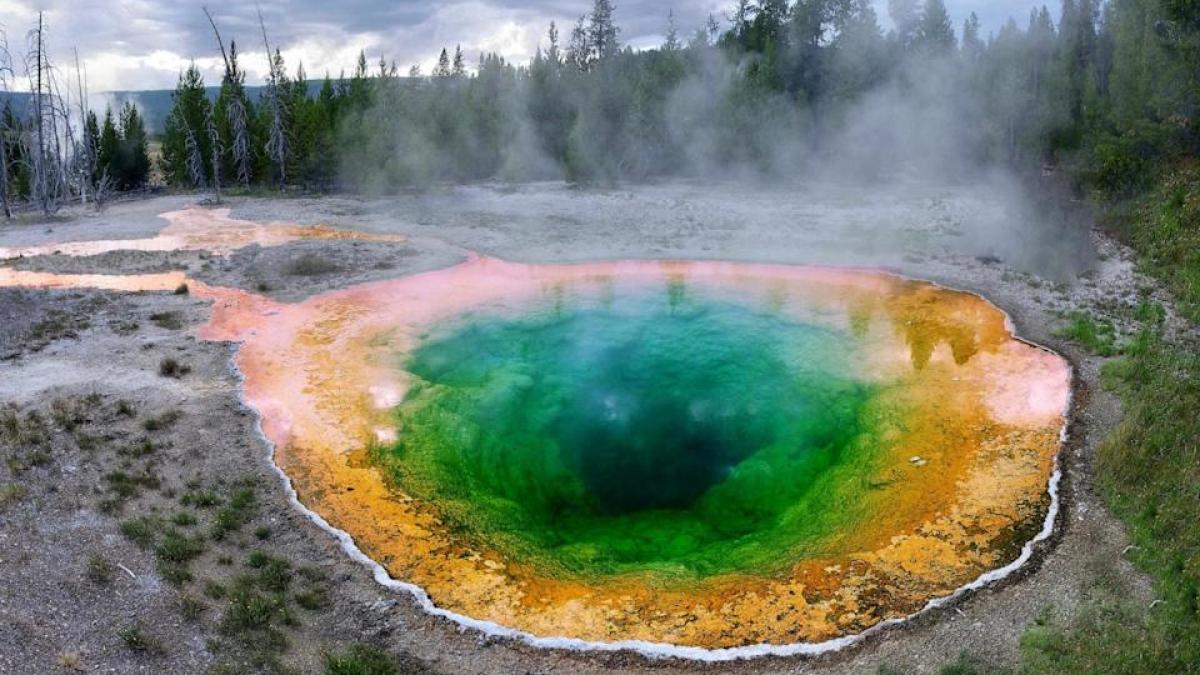Geologists have found a magma hat in Yellowstone National Park, which probably plays a critical role in preventing a massive eruption in one of the largest active volcanic systems in the world.
The “vibrant rich” hat made of magma is about 2.4 miles below the earth’s surface and essentially acts as a lid – capturing pressure and heat beneath it, according to the team of researchers who revealed it.
More: How national parks and forests can suffer as a result of federal dismissals
It was found after scientists used 53,000 pounds of Vibroseis trucks to generate small earthquakes that send seismic waves to the ground, according to the document published last week in nature. The measured waves reflect the underground layers, revealing a sharp limit of depth where the magma cap is located.
Scientists were surprised to see “something physical happening” at this depth, said Brandon Schmand, a professor of land, environmental and planetary sciences at the University of Rice and co -author of the study, in a statement.

Photo: Steam morning fame pool in the Upper Geyser pool, Yellowstone National Park, Wyoming. (Marina_poushkina/Getty Images/IstockPhoto)
The stability of dangerous volcanic systems is “strongly influenced” by the most gained magma storage depth, according to paper. In addition, the magma tank in the upper crust under the caldera of Yellowstone is not well restricted, the researchers said.
“For decades, we have known that there is a magma under a yellowstone, but the exact depth and structure of its upper border is a big question,” Schmand said. “What we found is that this tank has not closed – it has been sitting there for a few million years, but it is still dynamic.”
More: Yellowstone Visitors are so comfortable as the wilderness approaches that park employees ask them to stop
In 2022, researchers found that Yellowstone’s Supervolcano had a significantly more magma tank under the caldera than it had previously been thought. The lava also flows into shallow depths that nourish before the eruption.
The researchers modeled various conditions of rocks, melt and volatile to determine what materials the magma cap – a mixture of silicate melt and over -critical water bubbles in the porous rock. The bubbles are formed when the magma rises and decompres, causing gas such as water and carbon dioxide to be separated from the melt.

Photo: The great prismatic hot spring is among the national parks, countless hydrothermal characteristics created by a supervision of Yellowstone. Shot on July 22, 2014 at Yellowstone National Park, WY. (Jonathan Newton Post via Getty Images)
The volcanic eruptions can then occur when the bubbles accumulate and increase the fadiness by moving an explosion.
However, the eruption in Yellowstone is probably not upcoming, the researchers say.
Seismic image data and advanced computer modeling show that the magma tank is actively released gas but remains in a stable state. The system is described by Schmand as “stable breathing”, with the bubbles rising and released through the porous rock of the magic cap.
“Although we found a rich in a volatile layer, its balloon and melt content are below the levels, usually related to the upcoming eruption,” Schmand said. “Instead, it seems that the system is effective to release gas through cracks and ducts between mineral crystals.”
More: Yellowstone Supervolcano has much more magma than it has been thought so far: scientists
Yellowstone’s complex geology has proven to be a challenging environment to get the data, the researchers said. The distracting seismic waves produced noisy data that were difficult to interpret.
“When you see noisy, challenging data, don’t give up,” said Chenlock Duan, co -author of the study.
Geologists were able to capture one of the first “super clear” images on the top of the magma tank under the caldera of Yellowstone, using the structural seismic image technique, said Duan, who developed the technique.
The discovery can offer clues for future activity against the backdrop of Yellowstone’s vast volcanic system, researchers said.
The hidden magma hat discovered at Yellowstone National Park originally appeared on abcnews.go.com
